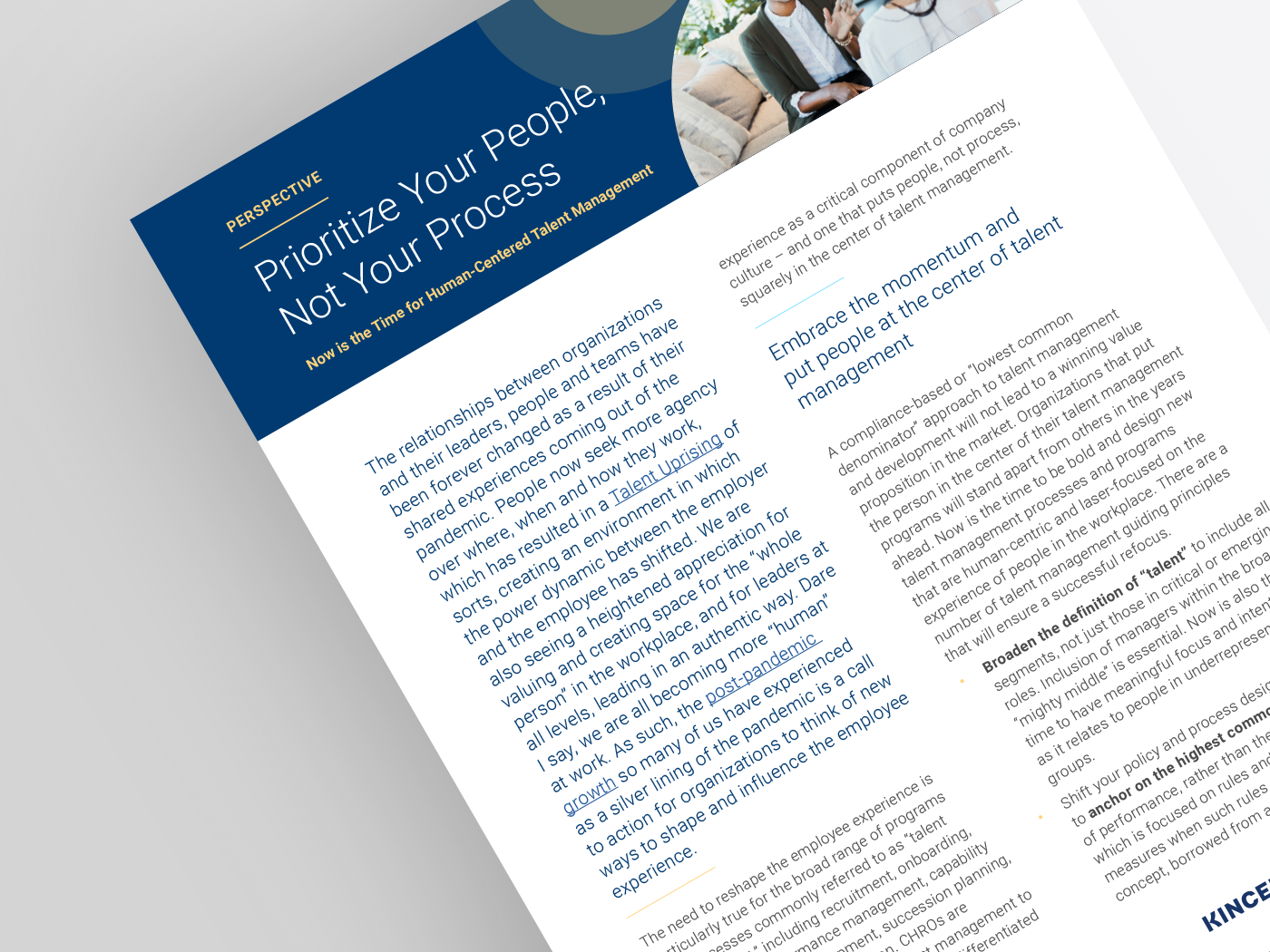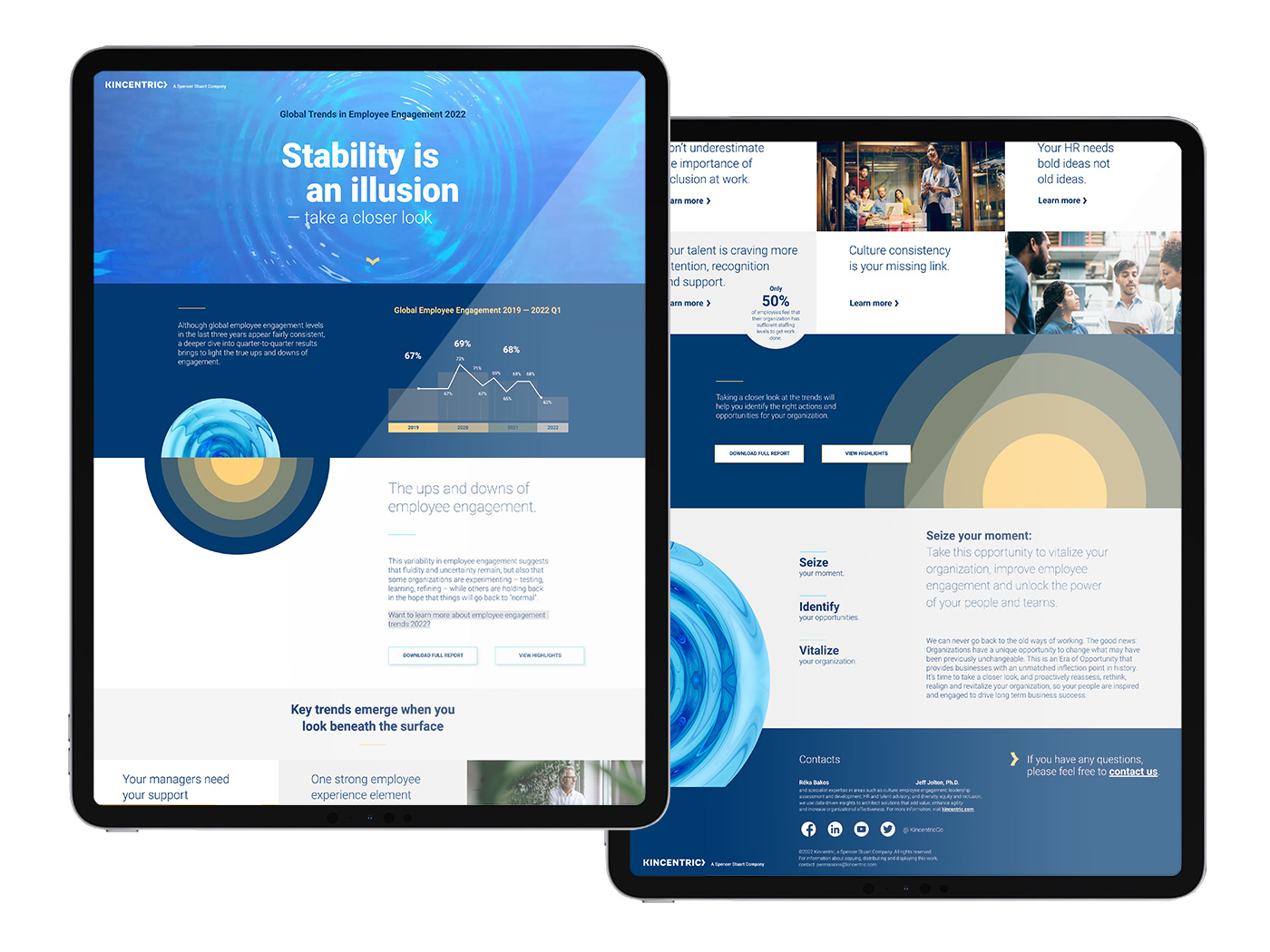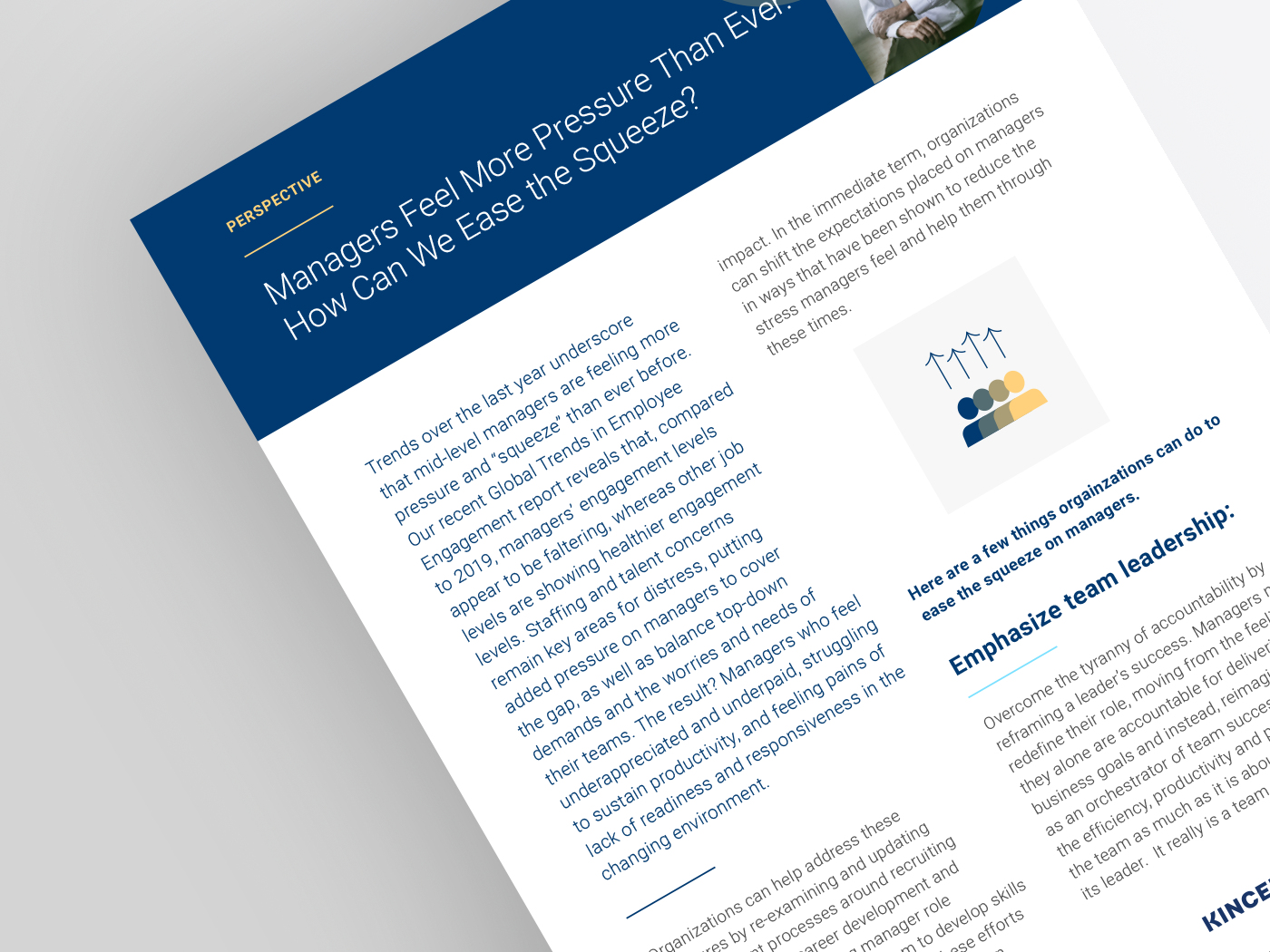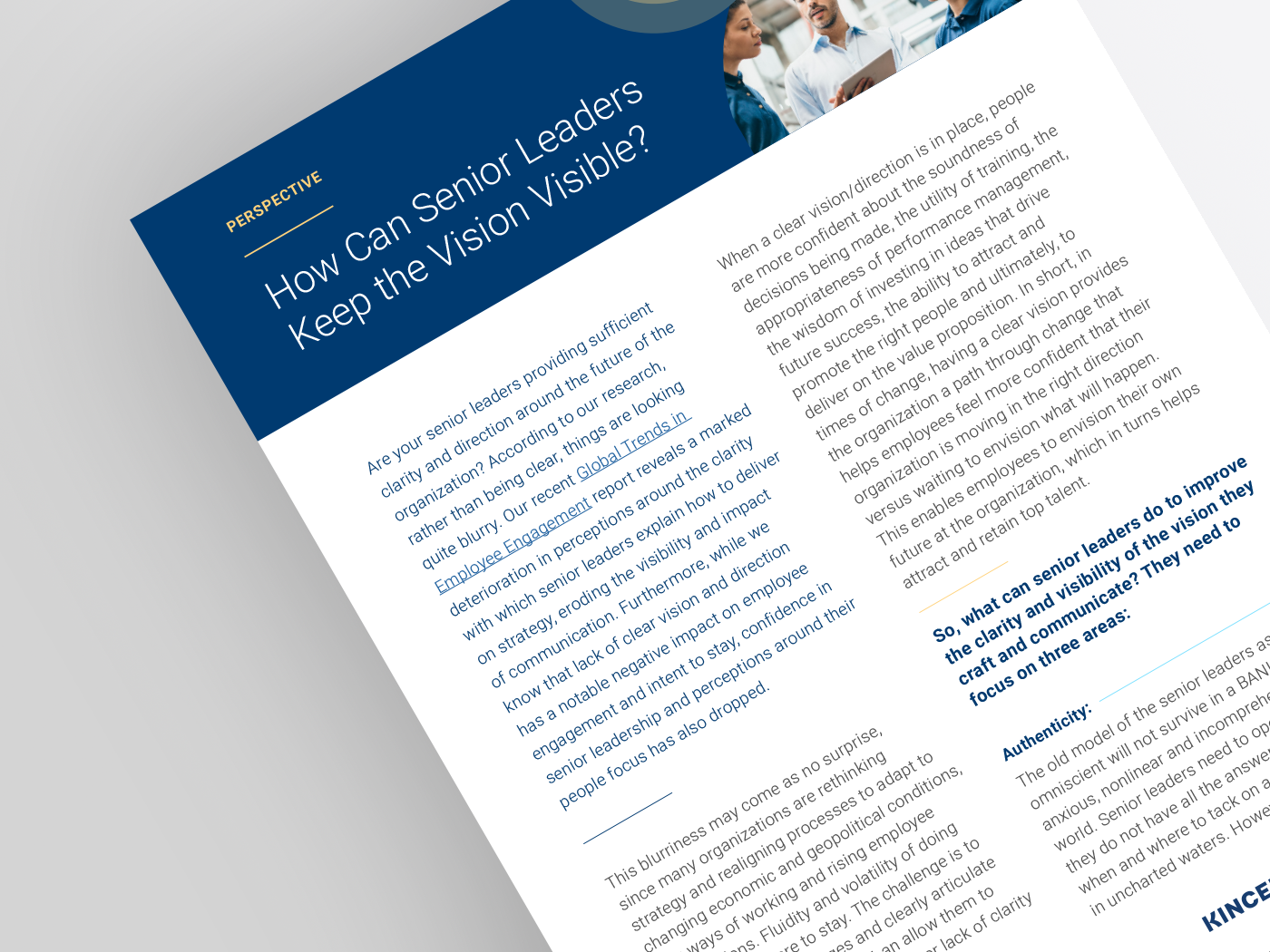The relationships between organizations and their leaders, people and teams have been forever changed as a result of their shared experiences coming out of the pandemic. People now seek more agency over where, when and how they work, which has resulted in a Talent Uprising of sorts, creating an environment in which the power dynamic between the employer and the employee has shifted. We are also seeing a heightened appreciation for valuing and creating space for the “whole person” in the workplace, and for leaders at all levels, leading in an authentic way. Dare I say, we are all becoming more “human” at work. As such, the post-pandemic growth so many of us have experienced as a silver lining of the pandemic is a call to action for organizations to think of new ways to shape and influence the employee experience.
The need to reshape the employee experience is particularly true for the broad range of programs and processes commonly referred to as “talent management,” including recruitment, onboarding, goal setting, performance management, capability assessment and development, succession planning, career management, and so on. CHROs are elevating the conversation on talent management to highlight the critical need to provide a differentiated and personalized employee – or human – experience as a critical component of company culture – and one that puts people, not process, squarely in the center of talent management.
Embrace the momentum and put people at the center of talent management
A compliance-based or “lowest common denominator” approach to talent management and development will not lead to a winning value proposition in the market. Organizations that put
the person in the center of their talent management programs will stand apart from others in the years ahead. Now is the time to be bold and design new talent management processes and programs
that are human-centric and laser-focused on the experience of people in the workplace. There are a number of talent management guiding principles that will ensure a successful refocus.

-
Broaden the definition of “talent” to include all segments, not just those in critical or emerging roles. Inclusion of managers within the broad “mighty middle” is essential. Now is also the time to have meaningful focus and intentionality as it relates to people in underrepresented groups.
-
Shift your policy and process design philosophy to anchor on the highest common denominator of performance, rather than the alternative, which is focused on rules and punitive measures when such rules are broken. This concept, borrowed from a CHRO at a company long considered to be leading edge with their culture and talent practices, is powerful. CHROs must take a leap of faith and design talent programs based on the tenet that people are capable, trustworthy, eager to thrive and will reach their full potential at work.
-
Simplify wherever possible. Too many companies have designed talent processes that even HR professionals find frustrating and are unable to embrace or champion. It is time to simplify and remove every step along the way that does not contribute to desired outcomes. Reducing the number of workflow reviews and approval steps is a great place to start.
-
Do not forget development! Goal setting and performance management are very likely useless if you do not have corresponding learning and development programs and policies in place to help your employees embrace and respond accordingly to feedback. It is imperative when building the case for redesigning talent processes and programs to allocate budget for initiatives that will support people development as well.
-
Enable engaging leaders at all career levels. Just like senior leaders, the role of the frontline supervisor and manager is critical in driving performance and potential in an organization, so be sure to provide them with sufficient support. In particular, when deploying talent management processes, it is crucial that you have strategic change management practices in place so that your managers are fully able to unlock the potential in their people and teams and are held accountable for doing so. Build an environment that allows managers to practice, fail at times, and learn from those failures how to best engage and motivate their employees and provide support for those managers looking for real-time guidance.
-
Authentic, constructive conversations are the goal. Too often, success measures for talent management processes are focused on form completion, ratings distribution and other check-the-box activities, most of which do not result in improved performance. Leading HR practitioners agree that authentic, ongoing, strengths-based conversations are the goal, whether these conversations are focused on feedback, development or career aspirations. Creating a culture where candid conversations around performance between managers, employees and teams is the norm will set organizations apart. Everyone will be pleased with the positive engagement and enhanced performance that results.
-
Maintain a talent systems mindset. Attracting, assessing, developing and accelerating performance in people are interrelated, from the entry-level candidate all the way to your leaders on the succession path toward the C-suite. When redesigning the components of your talent management approach overall, be sure that you consider the experience of your people across the talent system and lifecycle. Maintain a systems mindset and understanding of your talent.
-
Leverage and learn from the insights and stories in your data. Even in the absence of advanced people analytics tools, you can find valuable insights on the effectiveness of your talent systems in your current people demographic data. Search for insights on what is producing desired outcomes, and seek to understand where there are gaps, misses and barriers. Also ensure you examine and
understand the experiences of underrepresented talent and strive to identify opportunities for meaningful course correction where needed.
-
Break biases. Emphasize inclusive practices. Require equitable decision making and outcomes. Your people and your business leaders will thank you for it. Leading companies are designing talent management processes with deliberate steps to ensure equitable, inclusive treatment, decision making and outcomes for all employees across all talent segments. Focus on eliminating both intentional and unintentional bias going forward.

Once your new guiding principles are established and you have put your people at the center of talent management, don’t forget to assess impact and amplify success stories:
-
Measure, learn, adjust, and measure again! For any talent management program or process, there should be corresponding success criteria and KPIs. A critical element here is to ensure success measures have a direct linkage to your overall business strategy. Adopting a continuous improvement mindset and leveraging design-thinking methodologies to adjust your programs along the way are important. Maintaining a corresponding and dynamic change management strategy and plan to drive successful adoption is critical.
-
Celebrate what’s possible. So often even organizations with leading talent management processes and programs do not attain desired outcomes, in part because employees maintain a perception that it will just be easier to achieve their career objectives at another organization. Be sure to celebrate those colleagues in the organization who are embracing your new talent processes and programs – whether it is the employee who has taken advantage of development programs and switched career paths internally or the manager who develops such great talent that she is now considered to be one of the best talent incubators in the
organization. Recognition can serve as a driving force for change and an inspiration to others.
-
Brand your philosophy and approach for talent management. Following on the theme of celebrating what is possible, brand your processes and programs to emphasize their
desired outcomes and your shifting philosophies to help your people and teams unlock and achieve their potential.
We are living in an exceptional moment in time
In this era of constant disruption and uncertainty, organizations must now work to create strategies, programs and processes that will allow both their people and their business to thrive into the future. Recognizing the importance of the human experience and making it individualized where possible, savvy CHROs will leverage the momentum we are currently experiencing to remain boldly and relentlessly focused on placing people at the center of talent management processes and programs to drive success.





